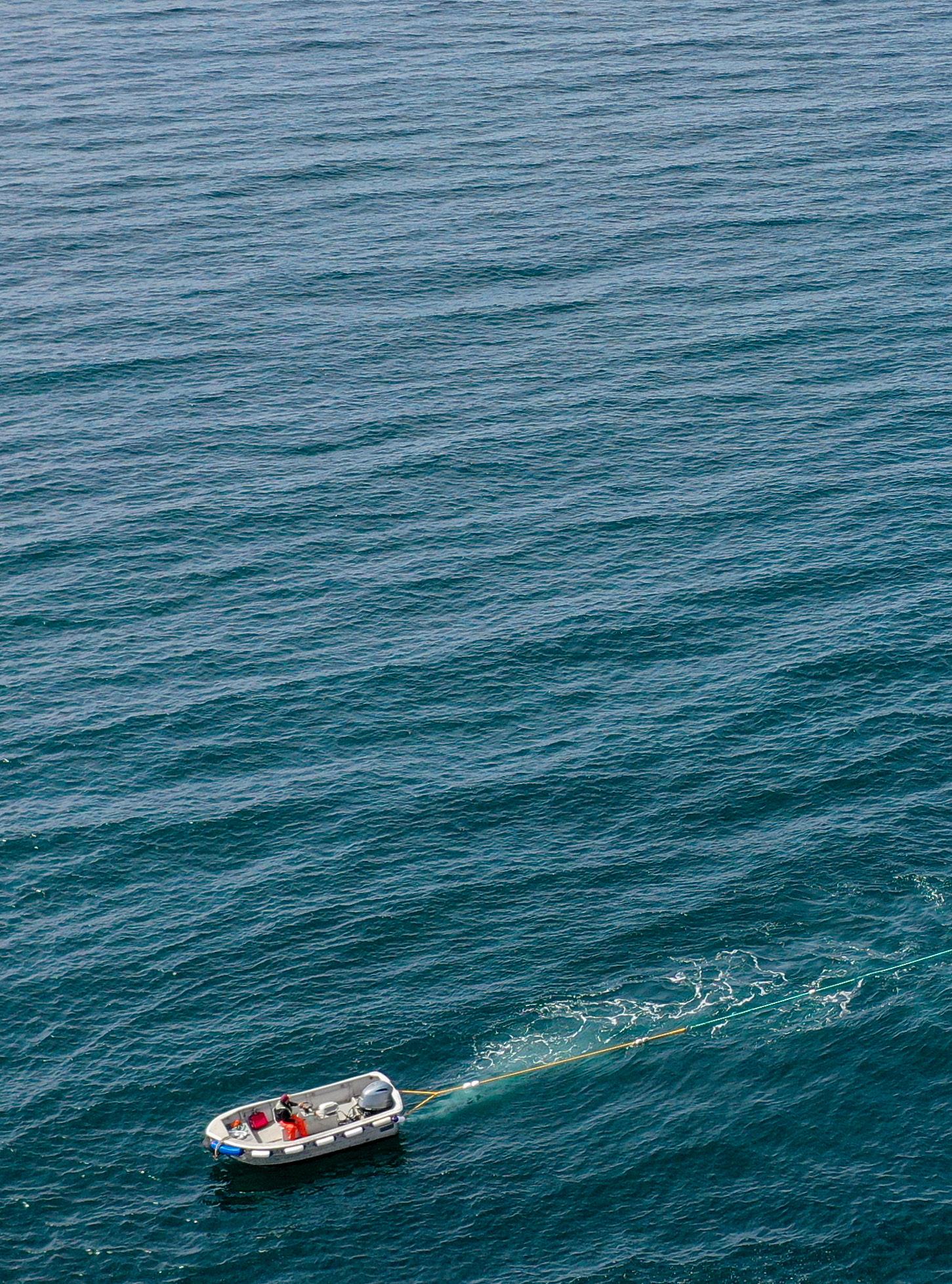
2 minute read
ALiving From the Sea
Kodiak Island lies in the Gulf of Alaska, 100 miles south of the Kenai Peninsula and 40 miles east of the Alaska Peninsula. A hundred miles long and fifty miles wide, the island was first inhabited by people who arrived in skin covered kayaks from western Alaska about 7,500 years ago.
Russian explorer Vitus Bering and his crew were the first Europeans to see Kodiak Island, in 1741. Bering saw lots of sea otters, and because sea otter fur was prized for hats and coats in Europe and china, Russian fur traders soon arrived from Siberia. Lacking the hunting skills necessary to catch the animals themselves, the Russians used violence and starvation to force Kodiak’s native Alutiiq people to do the hunting for them, and also delivered European diseases, all of which resulted in the near extermination of Kodiak’s indigenous people. By the mid-1800s the sea otters had been hunted nearly to extinction too, and with the economic engine for their Alaskan colony gone, the Russians sold Alaska to the U.S. in 1867.
In 1864, just three years before the Russians sold Alaska, Americans began using a revolutionary new technology, hermetically sealed cans, to pack salmon on the Sacramento River in California. By the 1870s, American fishermen and canners had arrived in Southeast Alaska and in 1882 built the first cannery at the mouth of the Karluk River, on the southwest coast of Kodiak Island. Kodiak’s canning industry grew explosively and by 1889, four million salmon a year were being canned on Kodiak.
Alaska’s fisheries were managed by the Federal Bureau of Fisheries, which was heavily influenced by corporate canneries head quartered in San Francisco and Seattle. Driven by the desire for short term profit, the canneries pushed for lenient fishing regulations, which by the late 1850s led to a near collapse of Alaska’s salmon runs. Partly in response to the decline of their salmon runs, Alaskans pushed for statehood, and when they got it in 1959, formed the Alaska Department of Fish and Game, which began managing salmon based strictly on science. The runs were gradually rebuilt, and salmon harvests are now at historic highs across the state, providing jobs for thousands of fishermen and processing workers every summer. In the early 1960s, Kodiak fishermen also began fishing king crabs, a resource which had not been previously eaten much by Americans. Canny marketing drove consumer demand however, and an modern fishing industry was born. A new shrimp fishery also came online in the 1960s and Kodiak boomed with hundreds of boats and fishermen bringing millions of dollars a year into the town. In the early 1980s both fisheries collapsed for reasons which are still debated, but which likely include overfishing and changing ocean conditions. Crab fishing continues every winter in the Bering Sea, and Kodiak fishermen fish “Out West,” and in the Gulf of Alaska for cod, pollock, halibut, black cod, herring, rockfish and salmon. Kodiak remains one of the top three American ports for value of fish landed.
In the 1970s and 1980s five or ten Kodiak fishermen a year were sometimes lost each year, mostly in extreme winter sea conditions. Better safety equipment and training have decreased the loss of life dramatically however, and in some recent years, not a single fishermen has been lost at sea anywhere in Alaska.
Commercial fishing is hard work, but hundreds of Kodiak fishermen continue to make their living from the sea, driven by a desire to work honestly and independently in a pristine and wild place, just as the first people who paddled ashore here did, 7,500 years ago.
Article Courtesy of the Kodiak Maritime Museum
500 Article Alimaq Drive
Kodiak, AK 99615
(907) 486-0384 www.KodiakMaritimeMuseum.org









